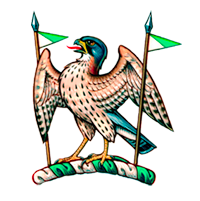
Touring
Touring
There is so much to discover in Sutherland. Countless historic sites, houses and castles.
Miles of beautiful unspoilt beaches, Museums and art galleries to explore.
THINGS TO KNOW ABOUT SUTHERLAND.
The old crofting county of Sutherland is situated in the far Northern Highlands of Scotland. It is bordered to the South by the county of Ross-shire, and to the North-East by the county of Caithness. With a population of just over 13,000 people living in an area covering 2,300 square miles, Sutherland is one of the remotest and sparsely populated, yet beautiful, parts of Scotland. It was the early Vikings who came to Caithness that named everything to the south "The Southlands" which is how Sutherland came by it's name.
5,252 km²
Total area ofSutherland
39,732
Total population of Caithness and Sutherland
County town
Dornoch
Boarders
Sutherland borders Caithness to the east, Ross-shire to the south and the Atlantic to the north and west.
SOME PLACES OF INTEREST
Dunrobin Castle
is the family seat of the Earl of Sutherland and the Clan Sutherland. It is located 1 mile (1.6 km) north of Golspie, and approximately 5 miles (8.0 km) south of Brora, overlooking the Dornoch Firth.
Dunrobin's origins lie in the Middle Ages, but most of the present building and the gardens were added by Sir Charles Barry between 1835 and 1850. Some of the original building is visible in the interior courtyard, despite a number of expansions and alterations that made it the largest house in the north of Scotland. After being used as a boarding school for seven years, it is now open to the public.
Castle of Mey, Barrogill Castle was in a semi-derelict state when, in 1952, the estate was purchased by Queen Elizabeth The Queen Mother. The Queen Mother set about restoring the castle for use as a holiday home, removing some of the 19th-century additions, and reinstating the Castle's original name. As part of the restoration, the castle was for the first time supplied with electricity and water. She regularly visited it in August and October from 1955 until her death in March 2002; the last visit was in October 2001.
It is now open seven days a week from 1 May until 30 September each year, with a closed period of ten days at the end of July and the beginning of August, when Their Royal Highnesses The Duke and Duchess of Rothesay usually stay at Mey.
Cawdor Castle
is set amid gardens in the parish of Cawdor in Nairnshire, Scotland. The castle is built around a 15th-century tower house, with substantial additions in later centuries. Originally a property of the Calder family, it passed to the Campbells in the 16th century. It remains in Campbell ownership, and is now home to the Dowager Countess Cawdor, stepmother of Colin Campbell, 7th Earl Cawdor.
The castle is perhaps best known for its literary connection to William Shakespeare's tragedy Macbeth, in which the title character is made "Thane of Cawdor". However, the story is highly fictionalised, and the castle itself, which is never directly referred to in Macbeth, was built many years after the life of the 11th-century King Macbeth.
The area is steeped in history, and many of
the attractions are open to visitors.
Click on the links below to find out more
information and opening times.
- Dunrobin Castle museum of taxidermy .
- The Timespan Museum in Helmsdale - history of the area.
- Kildonan Gold rush and Highland Clearances
- Ferrycroft Visitors Centre in Lairg - more of an environmental experience than a museum but good for a wet day!
- Tain through Time - Tain.
- Strathpeffer - Highland Museum of Childhood .
- Dingwall Museum.
- Fort George Highland Museum - Fort George.
- Culloden Battlefield Museum - Culloden by Inverness.
- Tarbat Discovery Centre - Pictish Museum near Portmahomack.
- Browns - Tain for Scottish modern art - highly recommended.
- Beauly - Kilmorack Gallery - highly rated gallery with summer exhibition.
- Tain Glass Factory - makers of contemporary glassware - worth a visit.
- Cromarty village - Black Isle - 18th century village and Lighthouse Caledonian canal.
- Croick Church - Ardgay.
- Dornoch Cathedral.
- Tarbat Ness Lighthouse beyond Portmahomack.
A Bit of shopping.
- Johnstons of Elgin: The finest cashmere and stunning homewares.
- Dornoch - the Jail: Clothing, cashmere, gifts and local crafts.
- Lairg - Sutherland Sporting
- tweeds and Highland dress.
- Rogart - Glass engraving.
- Tain - Tain Pottery
- local sponge ware.
- Anta - stunning pottery and fabrics with a modern Highland twist.
- Cromarty - pottery and wonderful 18th century town.
- Beauly - Campbell's of Beauly tweed and kilt shop.